
The Monkey Vault on Symes
The Monkey Vault is the only parkour-focused gym in Toronto. The jungle gym-like space serves as an indoor training ground designed to prep local fans of the extreme sport to scale real-world obstacles in urban, public settings, using nothing but their bodies and their surroundings to vault themselves to new heights.
The gym's founder, Dan Iaboni, has spent over a decade at the centre of the city's parkour scene. After learning about the sport in 2000, he put out a public call for his fellow daredevils; what followed eventually became the PKTO collective, which began meeting for regular runs in the downtown core. "By the third year, we had groups of 100 people coming out," he says.
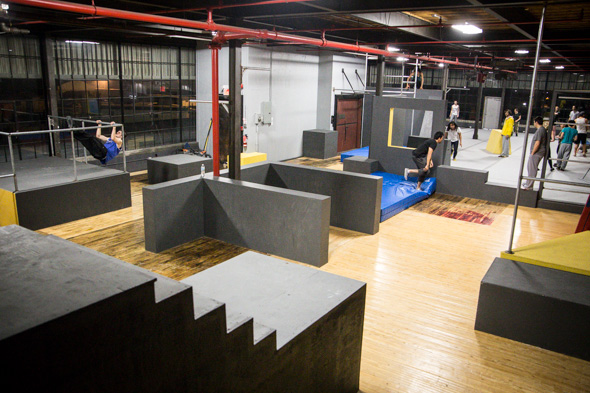
But the colder months killed participation (plus, it's hard to have 100-plus people jumping off things in Queen's Park without attracting some attention). In 2008, Iaboni decided to quit school, sell most of his stuff, and open a gym; not long after that, the first Monkey Vault opened its doors on Geary near Dufferin.
Iaboni's gamble paid off -- eventually, they outgrew the space. "It was only 3,000 square feet, and there were sometimes 100 people in there."
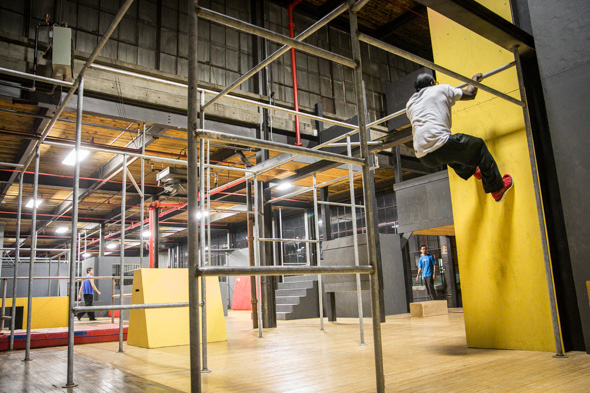
The brand-new Monkey Vault, which includes a foam pit and a climbing wall, takes up 10,000 square feet in two floors of a building in an industrial cul-de-sac. Once you're inside the top-floor space, it's easy to tell why it's the perfect spot. The floor-to-ceiling windows add an open-air feel, which plays to the gym's aim of eventually getting people comfortable enough to do parkour in a public setting. (Iaboni says they're planning to open them up in the summer and take advantage of the rooftop patio.) The space is kitted out with pipes, stairwells and wooden structures meant to mimic a cityscape.
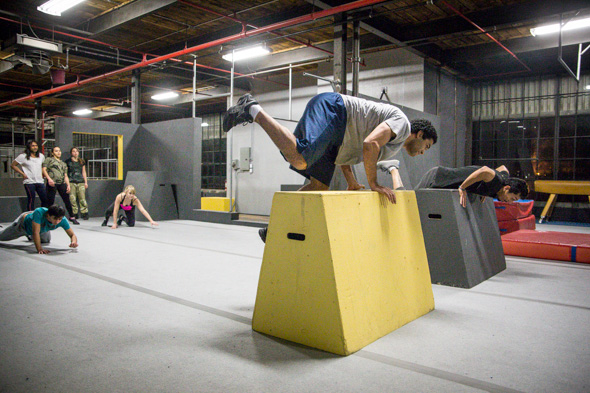
The classes are incredibly practical -- aside from a brief warm-up period, the session I attend is focused entirely on learning parkour skills. When it comes to beginners like myself, they're not sticklers for perfection -- get comfortable getting over the obstacle, Iaboni says, and the rest will eventually follow.
"No matter whether you're a beginner or an advanced guy, you're doing the same thing, and you're getting over the same objects," Iaboni says. "There's a lot of personalization in parkour -- just like no two people are going to take the same route down a ski hill. That's the cool thing about this sport: none of them are wrong."
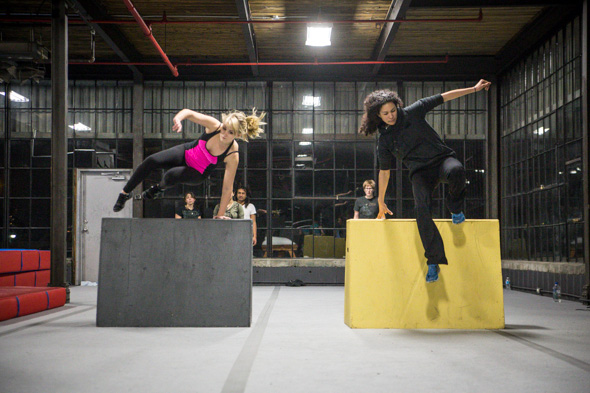
That anything-goes philosophy makes for an incredibly encouraging vibe as Iaboni leads us through a number of different vaults over a three-foot wooden block. (The others, noticing my inexperience, offer tips: "Don't run toward it too fast at first -- you'll psych yourself out.")

"Now, we're going to do that, but with a wall," Iaboni says, gesturing toward a nine-foot wooden wall with a thick foam mat on the other side, waiting to break our fall. We're meant to scale a block, then leap to the wall, using our momentum to propel ourselves over. (My first thought: "That's not happening." My second thought: "That looks like fun.")
The veterans sail effortlessly from the block to the wall to the other side; it's practically worth the price of admission just getting to watch them in action.
Me? I struggle my way up, even crashing to the soft, felt-like floor a couple of times. But everybody hollers tips and encouragement, and before I know it, I'm sitting on top of the wall to cheers and applause.
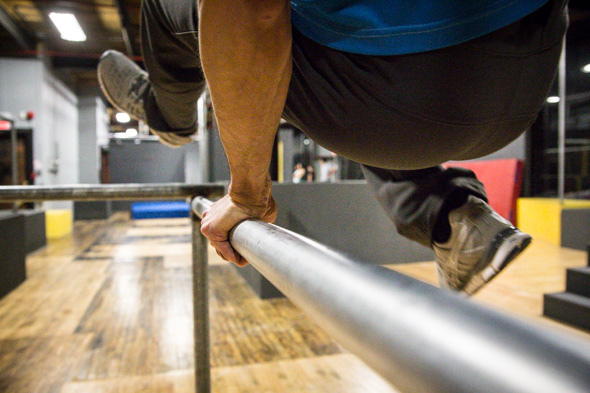
We move on to the network of steel bars at the back of the gym. At first, we practice wiping out, swinging back and forth and letting ourselves crash to the mats. (The fourth or fifth time, my callous-less hands are already protesting; after a few more minutes of practicing hanging from the bars, I have a couple of torn-open blisters.)
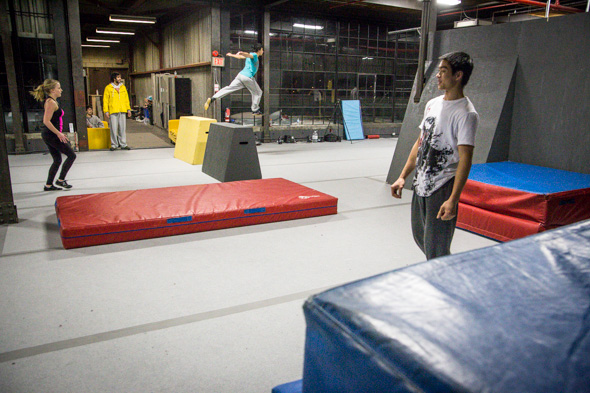
Another four or five rounds of vaults follow over different obstacles. I bash my shins and knees off several of the wooden blocks; eventually, I start getting the sense that that's got more to do with my own hesitation than my lack of physical strength. Another student sees me struggling with my lazy vault (where you just use your hands, not your feet, to lift yourself over an object) and offers to show me some tips after class. She tells me she's new to the sport herself, but executes the kick-and-pivot of the vault like it's nothing.
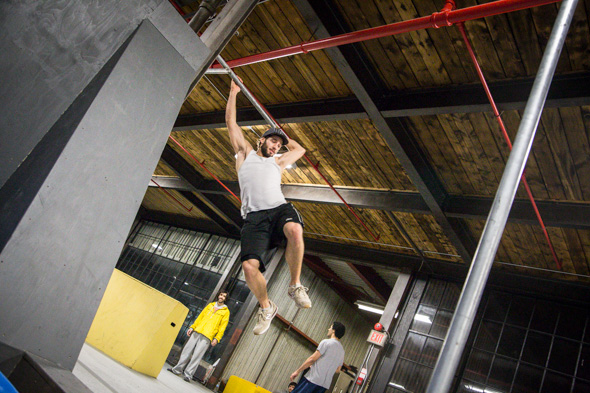
Iaboni says those changes come fast. "They start to move more naturally. They stop thinking. This sport is actually 80% mental. A lot of people think, 'Oh, I need to be big tough and strong to do parkour'. No, you need to be able to do simple things, and convince your mind."
So, final count: Two bruised shins, one bruised knee, one bruised and scraped knee, two busted-up hands, and an abdomen and upper body aching from a killer workout.
And I'm going back as soon as I can -- I'm psyched to see what else I can do once those mental hurdles fall away.
Natalia Manzocco. Photos by Jesse Milns






